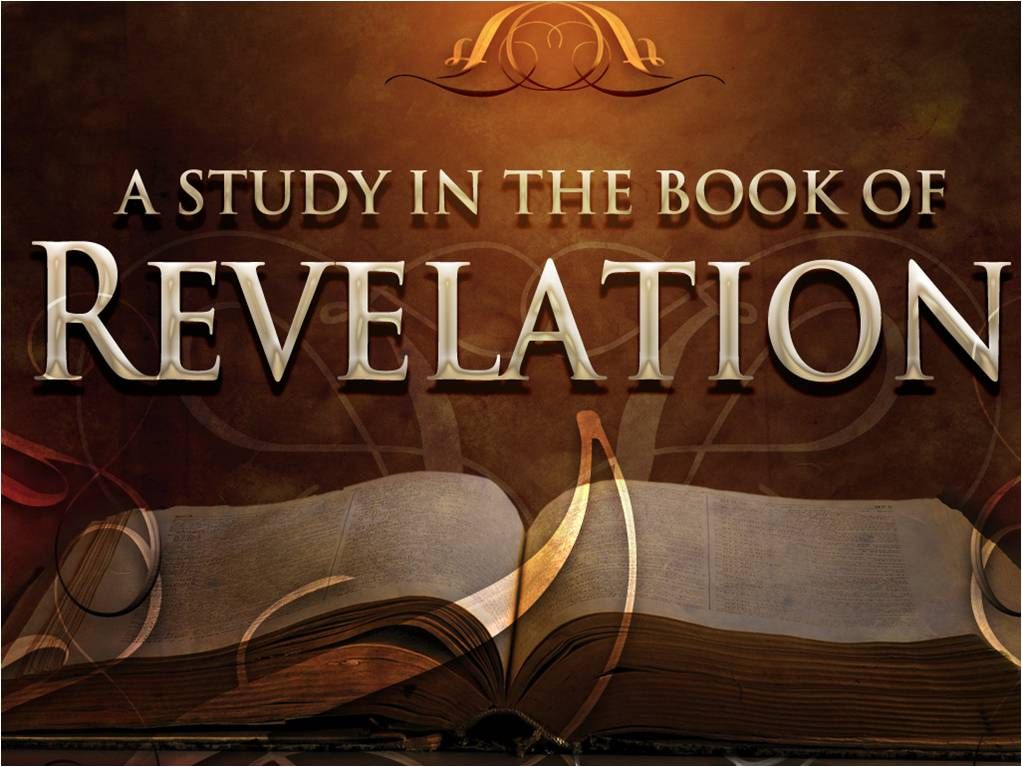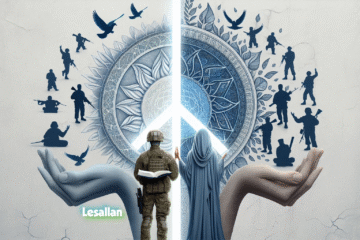
Revelation (ESV): Revised Book Survey
Written by Lesallan Bostron – May 14, 2023
Student at Ohio Christian University

General Materials in the Book of Revelation
The general material in the Book of Revelation (ESV) is that it is a book written by a prophet named John the Divine, a disciple of Jesus Christ. This book was written while he (John) was in exile on the Isle of Patmos. John was sent to the island of Patmos due to anti-Christian persecution during the reign of Roman emperor Domitian. As stated in Revelation 1:9, John’s exile resulted from his commitment to spreading the word of God and sharing the testimony of Jesus Christ. Historical accounts suggest that John was banished to Patmos by the Roman authorities as it was a standard penalty during the Imperial period for various offenses, including making political prophecies. The letters were written and addressed to the seven churches of Asia Minor (modern-day Turkey). As proclaimed by Jesus, these letters are given to John in a vision declaring the triumphs and failings of the recipient churches, and stern warnings are given to each congregation to repent. The churches of Asia Minor faced persecution and temptation from the Roman Empire and false teachers. The Book of Revelation is an apocalyptic book written from the prophetic literature found in the Old Testament. Apocalyptic literature is what the Book of Revelation is best known for. This type of literature (apocalyptic) means it uses visions, symbols, and allegories to reveal God’s plans for the future and encourage His people to remain faithful. The Book of Revelation focuses mainly on prophetic and apocalyptic events rather than individuals, historical or chronological occurrences, geographical locations, or ideological happenings. It reveals the divine plan that God has for the future. The Book of Revelation is a complex and thought-provoking text that draws from Old Testament apocalyptic teachings. However, for those who believe in God and His Son, Jesus Christ, the book offers a message of hope.
Major Structural Relationships
There are many different interpretations of the structural relationship for the Book of Revelation (ESV).
What are the different interpretations of the Book of Revelation (ESV)?
One interpretation has the book divided into two primary cycles held together by an interlocking center. At the end of the first cycle, John is told to prophesy again and does so in the second cycle (Hall, 2002). Further interpretation has the Book of Revelation divided into ten sections, with each section beginning with a scene from the heavenly sanctuary, and each of the five sections of the first half has a reflected image in the second half (Lackey, 2018). Other scholars have assigned four basic schools (views) of interpretation to the book of Revelation: the Preterist, Historicist, Idealist, and Futurist views.
The Book of Revelation (ESV) is divided into seven sections.
Each section parallels one another and depicts different aspects of God’s judgment and Salvation.
The Book of Revelation (ESV) consists of seven parallel sections that span the timeline between Christ’s first and second coming. Each section is presented from a distinct perspective.
What are the seven different sections?
The spiritual conditions and the challenges are mentioned in seven letters to the seven churches in Asia Minor (Revelation 2, 3, ESV).
What do the seven seals in Revelation chapters four through seven represent?
The seven seals represent and reveal the divine judgments on the world and the witness of the church through history (Revelation 4, 7, ESV).
What do the seven trumpets announce?
According to the book of Revelation (8, 11, ESV), the world’s partial destruction is foretold by the sounding of the seven trumpets, along with the church’s witness throughout history.
What do the seven signs found in Revelation chapters twelve through fourteen depict?
The topic of Revelation 12 and 14 is the cosmic struggle between God and Satan, Israel’s significance, Christ’s role, and the positioning of the church.
Who do the seven bowls found in Revelation chapters 15-16 which pour out the final wrath of God on the wicked and prepare for the end of the age, represent or depict?
Revelation sixteen describes a series of catastrophic plagues known as the “seven bowls.” These events were prophesied in the apocalyptic vision of Jesus Christ, as recorded by John of Patmos. Revelation sixteen describes a series of catastrophic plagues known as the “seven bowls.” These events were prophesied in the apocalyptic vision of Jesus Christ, as recorded by John of Patmos. His vision was of seven angels who were given seven bowls of God’s wrath. These bowls were all filled with the judgments and the wrath of God. God’s wrath was poured out on the wicked and the followers of the Antichrist after the sounding of the seven trumpets.
What type of plagues did the seven bowls represent or depict in the Book of Revelation chapter sixteen?
Seven plagues are represented or depicted. The first bowl causes painful sores to break out on those who have the mark of the beast and worship his image. In the second bowl, the sea was transformed into blood, resulting in the death of all living organisms within it. The third bowl again finds blood as the rivers and springs are turned into blood. This is done as a just retribution for those who shed the blood of God’s people. In the fourth bowl, the scorching sun unleashes fiery heat upon people. The fifth bowl plunges the kingdom of the beast into darkness, leading people to gnaw on their tongues in agony. According to prophecy, during the sixth bowl, the Euphrates River will dry up, making way for the kings of the east to unite at the Armageddon battleground for the ultimate battle. Great earthquakes and massive hailstorms are unleashed that destroy the cities and nations and Babylon – the great prostitute. The significance of the bowls lies in their representation of God’s righteous judgment upon a world that chooses to remain rebellious and sinful rather than repent and honor Him. These bowls symbolize God’s triumph over evil and His eventual restoration of all that is good.
Revelation uses a chiastic or symmetrical structure.
The first and last sections correspond to each other, the second and sixth sections correspond to each other, and so forth.
By comparing the words, themes, symbols, and ideas of the first half of the book with those of the second half, one can observe a chiastic or symmetrical structure. The Book of Revelation employs a literary device that begins with prophecy and then shifts to apocalyptic themes.
How does the Book of Revelation use a chiastic or symmetrical Structure?
The reason for the utilization of this particular literary structure in the book is to draw attention to the central point or climax of the message, thereby emphasizing it.
How does this structure help us understand the message of the Book of Revelation?
Understanding the message and appreciating the literary beauty of a text are aided by the chiastic structure. This structure also conveys that the battle between good and evil is under God’s control and will ultimately be won.
Many different types of literary devices are employed in the Book of Revelation.
The Book of Revelation uses literary devices such as repetition, contrast, parallelism, symbolism, imagery, and numerology to convey its message.
Repetition is the act of using the same or similar words, phrases, and ideas to highlight a point or establish a pattern. Using contrasting words, phrases, and ideas can effectively highlight differences and create tension. Parallelism refers to using similar terms and words to demonstrate connections between other words, phrases, or ideas. In the Book of Revelations, symbolism is utilized to represent abstract concepts, qualities, or realities through the use of solid objects, actions, or characters. The Book of Revelation employs vivid and descriptive language that forms images and evokes sensations in the reader’s mind. Numerology utilizes numbers and patterns to communicate hidden or symbolic meanings to the reader. The reader is able to interpret these meanings through the use of numerology. Numbers hold various symbolic meanings, including three and a half, four and ten, eight, and twelve, among others. John utilized numerology in the book of Revelation to convey his worldview and express his belief in God’s ultimate triumph over evil. By incorporating numerology into his visions, John aimed to assist readers in comprehending the symbolic nature of his message and applying it to their own circumstances.
What is an example of the literary devices used in Revelation that create a point or emphasize a pattern?
According to Revelation 11:2-3 (ESV), the holy city undergoes a period of trampling for exactly three and a half years, which is used as a demonstration of numerology. The numbers four and ten are used to signify completeness or totality. This is exemplified in Revelation 4:6-9 (ESV), where four living creatures surround God’s throne to represent all of creation.
Many different Old Testament passages and themes are used.
Themes found in the Old Testament, i.e., the Books of Daniel, Ezra, Ezekiel, Isaiah, and Zechariah, are used in the Book of Revelation.
The Book of Revelation draws heavily on the Old Testament, especially on the books mentioned. The themes used are God’s sovereignty and the conflict between God and Satan. The judgment of God, the Salvation of God, and the worship of God.
What are some examples of these themes and passages in the Book of Revelations?
Revelation affirms that God is the Creator of all things, that He has a plan for all things, and this will end in His victory over evil and the founding of His eternal Kingdom (Revelation, 4:11; 10:6; 11:15-17; 19:6). The conflict between God and Satan, the cosmic war between God and His faithful people on one side. On the other hand, Satan and his evil allies are found in Revelation 12:1-17; 13:1-18, and the protection God gives to His people when Satan is defeated in the final battle (Revelation, 19:11-21; 20:7-10). The judgment of God and the warnings are found in Revelations 6:1-17; 8:1-9:21; 11:15-19; 15;1-16:21. Salvation is proclaimed for those that repent of sin and place their trust in Christ in Revelation 5:9-10; 7:9-17; 12:11. The worship of God and Revelation showing God is worthy of worship and praise from all of His creation is found in Revelation 4:8-11; 5:8-14; 7:9-12; 11:16-18.
Revelation reveals Jesus Himself as the Lamb of God, the King of Kings, and the Lord of Lords.
There are various ways in Revelation that Jesus reveals himself as the Lamb of God, the King of Kings, and the Lord of Lords.
As the Lamb of God, He was slain. He redeemed people from every tribe, tongue, and nation by His blood (Revelation 5:6-10). He is the one who opens the seven seals and reveals God’s plan for history (Revelation 6:1-8:1). He stood on Mount Zion with the 144,000 who had His name and His Father’s name written on their foreheads (Revelation 14:1-5).
How does Jesus reveal Himself as the King of Kings in Revelation?
He rides on a white horse, wearing a crown and a robe dipped in blood. He has a sharp sword coming out of His mouth to strike nations down (Revelation 19:11-16). He is the one who has authority over every ruler. He is the one who has authority, power, and dominion over every name that is named (Revelation 17:14; 19:16). Jesus is also the one who will reign forever and ever with His Father on the throne of God and of the Lamb (Revelation 22:1-5).
How has Jesus revealed Himself as the Lord of Lords in Revelation?
He shows that He is the one who is worthy of worship and praise from every creature in the heavens, on the earth, under the earth, and on the sea as well as all that is in them (Revelation 5:11-14). He has the keys of death and Hades and lives forevermore (Revelation 1:17-18). He is the faithful and true one, the Alpha and the Omega, the beginning, and the End, the First and the Last (Revelation 19:11; 22:13).
Why has Jesus revealed Himself as the Lamb of God, the King of Kings, and the Lord of Lords?
He has revealed Himself to show His love, power, sovereignty, majesty, glory, and Salvation. He invites us to trust in Him, follow Him, worship Him, and share His victory.
Outline
- The prologue or Introduction: Revealing Jesus Christ and His greeting to the seven churches (Revelation 1:1-8, ESV).
A. Revelation is written by John the Divine and addressed to the seven churches in Asia.
B. Revelation contains a series of visions and messages from Jesus Christ.
- Visions of the risen and worshipped Christ and His message to the seven churches.
A. Messages of encouragement to the churches reminding them to remain faithful and warning them of the consequences of unfaithfulness.
- Visions of the throne room of God and the one (lamb) worthy to open the scroll with seven seals (Revelation 4:1-5:14, ESV).
- The vision of the opening of the six seals and sealing of the 144,000 (Revelation 6:1-7:17, ESV).
- The vision in the opening of the seventh seal and the sounding of the trumpets (Revelation 8:1-11:19, ESV).
- The vision of the woman and the dragon, the war between them and their allies (Revelation 12:1-14:20, ESV).
- The vision of the seven bowls of God’s wrath and the fall of Babylon (Revelation 15:1-18:24, ESV).
- The second coming of Christ, the defeat of His enemies, and the binding and release of Satan (Revelation 19:1-20:15, ESV).
- The vision of the new heaven and earth, the new Jerusalem (Revelation 21:1-22:5, ESV).
A. Believers today can take comfort in knowing that God is in control and will triumph over evil.
- Conclusion and epilogue: The final words of Christ, John, and an angel (Revelation 22:6-21, ESV).
Reportorial Questions
Who?
Who authored the Book of Revelation?
The author of the Book of Revelation is identified as John, who also referred to himself as the disciple loved by Jesus. John is also the author of the Gospel of John and three Epistles: 1 John, 2 John, and 3 John. The author is the same as him, referred to as John of Patmos, a Christian prophet living on the island of Patmos in the Aegean Sea. The author’s true identity remains a topic of debate among scholars and Christians to this day.
To whom was the Book of Revelation written?
Revelation was written to the seven churches in the province of Asia (western Asia Minor). The original recipients were believers in Jesus Christ who lived during a time of persecution by the Roman Empire.
What?
What is the purpose that John had for writing the Book of Revelation?
The book of Revelation aims to uncover the spiritual truths that underpin the challenges confronted by the early church and to motivate believers to persevere in their faith despite persecution and temptation. John received a series of visions and messages from Jesus Christ and was instructed to write them down and send them to the seven churches in Asia. Based on the visions and messages, it is clear that the course of history is under God’s control and that he will ultimately emerge victorious against all forms of evil. In addition, the messages to the churches encourage believers to remain faithful and warn them of the consequences of unfaithfulness.
When?
When was the Book of Revelation written?
The Book of Revelation’s date is also an ongoing debate among scholars. The book has two main views: the late date and the early date. The late date has it written around A.D. 95. The early date view has the book authored around A.D. 68-69.
Where?
Where was the Book of Revelation written?
If we attribute authorship to John of Patmos, the book was written on the island of Patmos in the Aegean Sea.
Why?
Why was the Book of Revelation written?
The Book of Revelation was written to reveal Jesus Christ and His plans for the future. Second, the Book of Revelation was written to give comfort and strength to those believers who were facing persecution and suffering. Third, Revelation was written to prophesy the events that will occur before and during the second coming of Jesus Christ. Finally, the Book of Revelation was written to the seven churches to exhort them to repentance, obedience, and holiness.
How?
How should a person interpret the visions, symbols, and allegories in the Book of Revelation?
The visions, symbols, and allegories are not very easy to interpret. There are different approaches and different views among scholars and Christians. However, some general principles will help us to understand them much better. First, it must be recognized that Revelation is a visible prophecy that uses imagery to convey its message. Therefore, we should not take the visions literally, but use them to communicate spiritual truths and realities vividly and dramatically. Second, the visions, symbols, and allegories must be compared to other parts of the Bible, especially in the Old Testament. Third, the original audience’s historical and cultural context must always be considered. Instead of getting lost in the details, we must seek out the main point or message of each vision, symbol, or allegory.
How does the Book of Revelation encourage believers to remain faithful?
The early church’s struggles were driven by spiritual realities, which are revealed in the Bible. It highlights that God has ultimate control and will triumph over evil, offering comfort and assurance to believers facing persecution and temptation. In addition, the book includes messages directed toward the seven churches in Asia, urging them to remain steadfast in their faith and cautioning them about the repercussions of being unfaithful. These messages also hold relevance for contemporary believers, as they inspire them to stay loyal amidst their own hardships. The book ultimately portrays God’s victory over evil and the promised reward for those who remain faithful. Such visions can instill hope and inspire believers to persevere in the midst of persecution and temptation.
Key Verses
“I am the Alpha and the Omega,” says the Lord God, “who is and who was and who is to come, the Almighty” (Revelation 1:8, ESV).
“and the living one. I died, and behold I am alive forevermore, and I have the keys of Death and Hades” (Revelation 1:18, ESV).
“And to the angel of the church in Philadelphia write: ‘The words of the holy one, the true one, who has the key of David, who opens and no one will shut, who shuts and no one opens” (Revelation 3:7, ESV).
“And one of the elders said to me, “Weep no more; behold, the Lion of the tribe of Judah, the Root of David, has conquered, so that he can open the scroll and its seven seals” (Revelation 5:5, ESV).
“After this I looked, and behold, a great multitude that no one could number, from every nation, from all tribes and peoples and languages, standing before the throne and before the Lamb, clothed in white robes, with palm branches in their hands” (Revelation 7:9, ESV).
“And they have conquered him by the blood of the Lamb and by the word of their testimony, for they loved not their lives even unto death” (Revelation 12:11, ESV).
“He will wipe away every tear from their eyes, and death shall be no more, neither shall there be mourning, nor crying, nor pain anymore, for the former things have passed away” (Revelation 21:4, ESV).
“He who testifies to these things says, “Surely I am coming soon.” Amen. Come, Lord Jesus!” (Revelation 22:20, ESV).
Other Major Impressions
- Jesus Christ is the Divine author of the Book of Revelation (Revelation 1:1, ESV).
- Jesus Christ is present among His churches through His Holy Spirit (Revelation 1:4-5, ESV).
- Jesus Christ will return again in glory and power to judge and defeat all His enemies, including Satan (Revelation 1:7; 6:15-17; 14:14-20; 19:11-16, ESV).
- Jesus Christ will create a new heaven and new earth where He will dwell with His people forever (Revelation 21:1-5; 21:22-27; 22:1-5, ESV).
Further Questions
- Are the churches in modern-day Turkey still failing?
- What is the current state of Christianity in the United States today?
References:
Beale, G. K. (1999a). Revelation: a commentary on the Greek text. W.B. Eerdmans.
Beasley-Murray, G. R. (1997). “Revelation, Book of.” In Dictionary of the Later New Testament and Its Developments, edited by Ralph P. Martin and Peter H. Davids, 1025–38. Downers Grove, IL: Intervarsity.
BibleProject. (2021). How to Read the Bible: Apocalyptic Literature. Www.youtube.com. https://www.youtube.com/watch?v=UNDX4tUdj1Y
Book of Revelation – ESV – Bible Study Tools. (n.d.). Biblestudytools.com. https://www.biblestudytools.com/esv/revelation/
Book of Revelation Explained Scripture by Scripture. (2023). Bible-Studys.org. https://bible-studys.org/Discoverrevelation.com/Book%20of%20Revelation%20Explained.html
Hall, M. S. (2002). The Hook Interlocking Structure of Revelation: The Most Important Verses in the Book and How They May Unify Its Structure. Novum Testamentum, 44, 278-296. https://doi.org/10.2307/1561213
Keener, C. S. (2014). The IVP Bible background commentary: New Testament. Intervarsity Press.
Lackey, D. (2018). THE BOOK. A Revelation of Jesus | Www.revelationofjesus.net. https://revelationofjesus.net/en/the-book/
Mounce, R. H. (1997). The Book of Revelation. W.B. Eerdmans.


